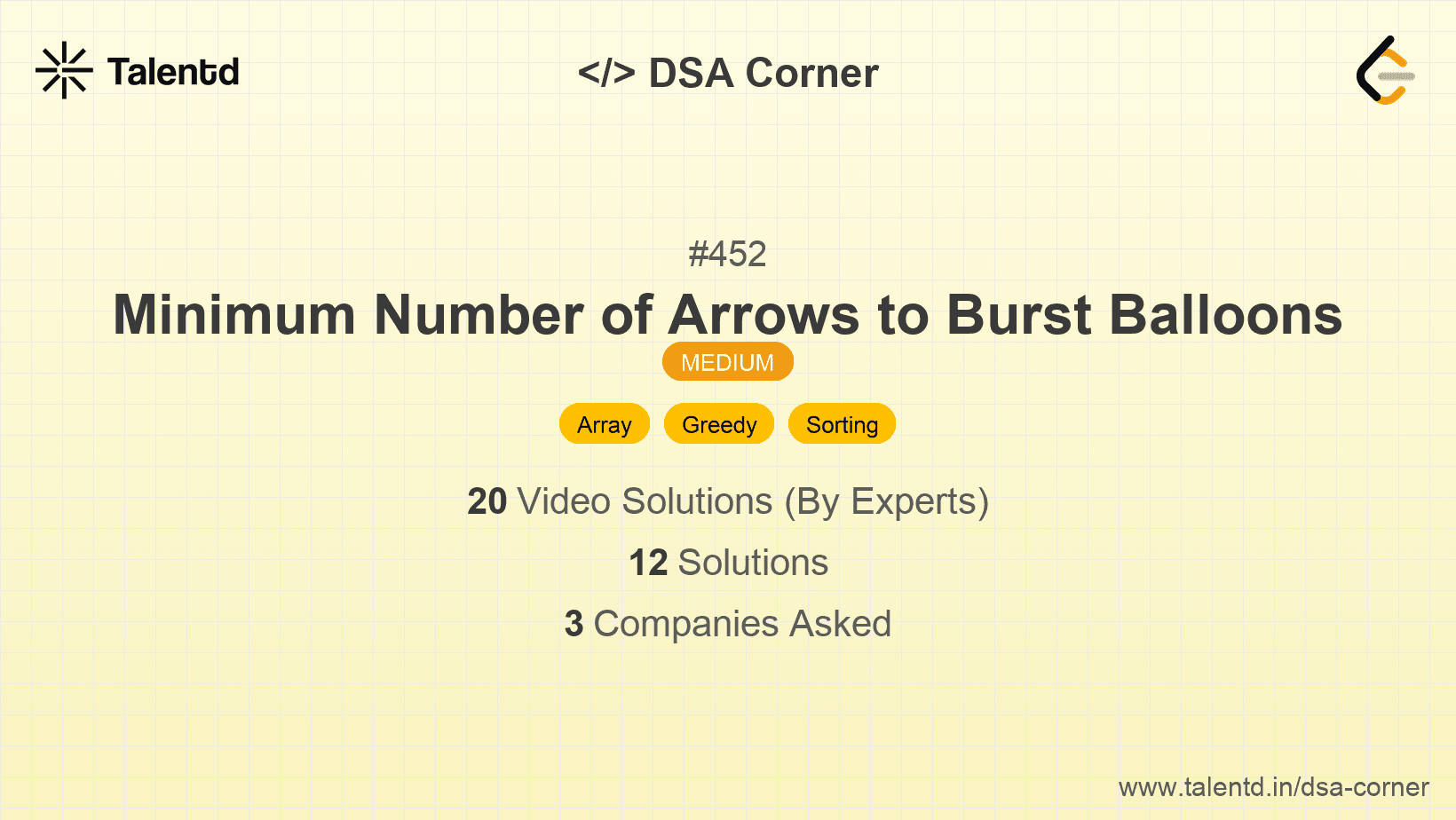
Sponsored
Sponsored
This approach involves sorting the balloons by their end points. Once sorted, we shoot an arrow at the end point of the first balloon, and then continue moving through the list, checking if subsequent balloons overlap with the burst of the arrow. If a balloon does not overlap, we need an additional arrow for it.
Time Complexity: O(n log n) due to the sorting step, where n is the number of balloons.
Space Complexity: O(1) if we ignore the space used for sorting.
1#include <iostream>
2#include <vector>
3#include <algorithm>
4
5using namespace std;
6
7int findMinArrows(vector<vector<int>>& points) {
8 if (points.empty()) return 0;
9 sort(points.begin(), points.end(), [](vector<int>& a, vector<int>& b) {
10 return a[1] < b[1];
11 });
12 int arrows = 1;
13 int end = points[0][1];
14 for (const auto& p : points) {
15 if (p[0] > end) {
16 ++arrows;
17 end = p[1];
18 }
19 }
20 return arrows;
21}
22
23int main() {
24 vector<vector<int>> points = {{10, 16}, {2, 8}, {1, 6}, {7, 12}};
25 cout << findMinArrows(points) << endl;
26 return 0;
27}This C++ solution sorts the balloons by their end point and uses a greedy strategy to manage overlaps. By maintaining an 'end' variable which represents the position of the last arrow shot, we are able to minimize the number of arrows.
We use a lambda function within sort to order the balloons by their xend values. Then, iterate over the list to determine when an additional arrow is needed based on whether the start of the current balloon is greater than the last end position covered.
This approach is adapted from the interval scheduling maximization pattern, where we attempt to find the maximum number of non-overlapping intervals. By sorting the intervals, we can focus on selecting the maximum number of compatible balloons.
Time Complexity: O(n log n) resulting from sorting operations.
Space Complexity: O(1) when sorting space considerations are minimized.
1
Python’s list-method sort facilitates this solution style by initial ordering on start points establishing an easy visual series.
The greediest overlaps stored by the `last_end` facilitates arrow accounting and minimizes overlapping discernment errors.